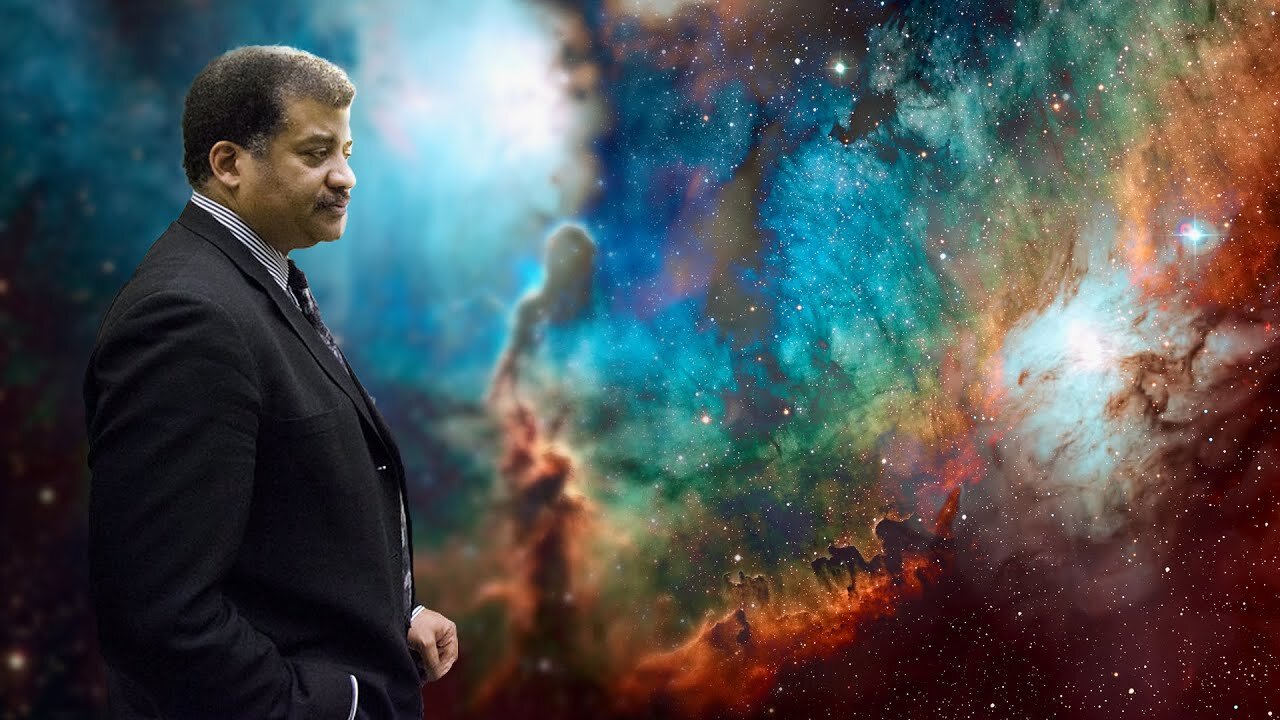Premium Only Content

The Early Universe Explained by Neil deGrasse Tyson
The Early Universe Explained by Neil deGrasse Tyson
Neil deGrasse Tyson explains the early state of our Universe. At the beginning of the universe, ordinary space and time developed out of a primeval state, where all matter and energy of the entire visible universe was contained in a hot, dense point called a gravitational singularity. A billionth the size of a nuclear particle.
While we can not imagine the entirety of the visible universe being a billion times smaller than a nuclear particle, that shouldn't deter us from wondering about the early state of our universe. However, dealing with such extreme scales is immensely counter-intuitive and our evolved brains and senses have no capacity to grasp the depths of reality in the beginning of cosmic time. Therefore, scientists develop mathematical frameworks to describe the early universe.
Neil deGrasse Tyson also mentions that our senses are not necessarily the best tools to use in science when uncovering the mysteries of the Universe.
It is interesting to note that in the early Universe, high densities and heterogeneous conditions could have led sufficiently dense regions to undergo gravitational collapse, forming black holes. These types of Primordial black holes are hypothesized to have formed soon after the Big Bang. Going from one mystery to the next, some evidence suggests a possible Link Between Primordial Black Holes and Dark Matter.
In modern physics, antimatter is made up of elementary particles, each of which has the same mass as their corresponding matter counterparts -- protons, neutrons and electrons -- but the opposite charges and magnetic properties.
A collision between any particle and its anti-particle partner leads to their mutual annihilation, giving rise to various proportions of intense photons, gamma rays and neutrinos. The majority of the total energy of annihilation emerges in the form of ionizing radiation. If surrounding matter is present, the energy content of this radiation will be absorbed and converted into other forms of energy, such as heat or light. The amount of energy released is usually proportional to the total mass of the collided matter and antimatter, in accordance with Einstein's mass–energy equivalence equation.
Antimatter particles bind with each other to form antimatter, just as ordinary particles bind to form normal matter. For example, a positron (the antiparticle of the electron) and an antiproton (the antiparticle of the proton) can form an anti-hydrogen atom.
While these cosmic quandaries keep astrophysicists up at night, we are more than grateful to be alive in a time where we can even begin to contemplate the mysteries of the universe and our place in it.
#Universe #neiltyson #science
Sources:
Neil deGrasse Tyson at 92Y :
• A mind-expanding tour of the cosmos w...
NASA article: https://www.nasa.gov/mission_pages/ch...
https://www.nasa.gov/feature/goddard/...
https://en.wikipedia.org/wiki/Antimatter
https://en.wikipedia.org/wiki/Timelin...
"Dr. Neil deGrasse Tyson Visits JWST and NASA Goddard" by James Webb Space Telescope is licensed under CC BY 2.0
-
 17:54
17:54
Dr Disrespect
16 hours agoDR DISRESPECT vs VAN DAMME in Hitman 3
53.1K11 -
 2:05:26
2:05:26
Side Scrollers Podcast
18 hours ago4Chan SUES UK Government + Craig Has Mental Illness Fatigue + Knight Rider REBOOT | Side Scrollers
29.1K8 -
 19:26
19:26
GritsGG
1 day agoChat Picked My Hair Color! All Pink Loadout & Operator Challenge!
22.6K4 -
 10:32
10:32
Nikko Ortiz
1 day agoFunniest Fails Of The Month
53.2K7 -
 1:27:34
1:27:34
TruthStream with Joe and Scott
4 days agoArchitect Richard Gage: 911 truths and more #482
27.8K7 -
 LIVE
LIVE
Lofi Girl
2 years agoSynthwave Radio 🌌 - beats to chill/game to
166 watching -
 56:48
56:48
The HotSeat
14 hours agoI'm NOT Sorry! Guns Aren’t the Problem—Godless Culture Is
32.3K30 -
 9:43
9:43
The Pascal Show
15 hours ago $0.52 earnedWHOA! Annunciation School Sh**ter Identified... Heartbreaking & Insane
4.98K2 -
 22:42
22:42
Liberty Hangout
10 hours agoCollege Democrats Say Gangs Are GOOD!
78.3K69 -
 2:14:50
2:14:50
Badlands Media
15 hours agoBadlands Media Fantasy Football Live Draft
46.4K1